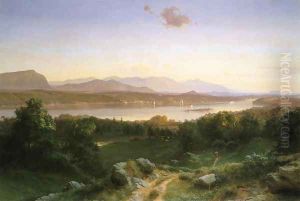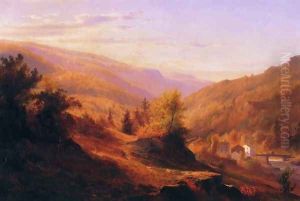Johann Carmiencke Paintings
Johann Hermann Carmiencke was a landscape painter born on February 9, 1810, in Hamburg, then part of the Danish Monarchy. His initial artistic education was under Danish painter, teacher, and art director, C.W. Eckersberg, and he later continued his studies in Dresden, which was a significant center for romantic landscape painting.
Carmiencke became known for his romantic landscape works which often featured elements of classicism. The artist worked in Germany and Denmark, becoming a member of the Copenhagen Academy in 1837. During the period in Europe, he created numerous paintings, showcasing his ability to capture the natural beauty of the northern landscape.
In 1851, seeking broader opportunities, Carmiencke emigrated to the United States. He settled in Brooklyn, New York, and became an active member of the American art scene. In America, his work evolved to reflect the diverse landscapes of the New World, particularly focusing on the scenery of the Hudson River Valley and the broader Northeastern United States. His American works are characterized by a sense of expansiveness and wilderness that differed from the more cultivated European scenes he previously depicted.
Carmiencke continued to work and exhibit in the United States until his death on June 15, 1867, in Brooklyn. His works from this period contributed to the Hudson River School, a movement that emphasized romantic, naturalistic, and often pastoral representations of the American landscape, and they remain an important part of the narrative of American art history.

